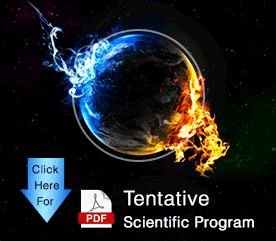Agham Delphine Tanyi
University of Buea, Cameroon
Title: Environmental remediation and interventions to global warming and climate change
Biography
Biography: Agham Delphine Tanyi
Abstract
Climate change is a major environmental challenge to the world today, with significant threats to ecosystems, food security, water resources and economic stability overall. Global energy consumption is dramatically increasing due to our quest for a higher living standard and increasing world population. In Cameroon, like many developing nations, the causes of air pollution are legion: aggravated bush burning, combustion, gas flaring, improper disposal of domestic and industrial wastes; pollution through oil spillage; car exhausts, unsanitary and unsafe housing, quarrying etc. Most of our energy comes from fossil fuel and burning of these fossil fuels causes environmental problems and in particular global warming. Changing environmental conditions, including rising temperatures caused by climate change, causes high levels of ozone that can affect the respiratory system and increases morbidity and mortality, particularly in sensitive groups of the population. More than 4.6 million people die every year due to air pollution and most is attributed to indoor pollution. Indoor air pollution is one of the most overlooked threats to human health, affectin young children who spend an estimated 80% of their time indoors. Studies released in the past few years clearly demonstrates that poor indoor air quality not only increases asthma symptoms but can also be responsible for headaches, fatigue, nausea, allergic reactions, hormone imbalances and liver, kidney or central nervous system damage. Ozone concentrations are highly dependent on environmental conditions, including temperature and it is thought to be likely that long-term changes in climate will affect levels of future ozone pollution. Instead of tackling these problems of climate change separately, there are technological solutions that address both concerns at the same time: for example, switching from fossil fuels to renewable forms of energy cuts down on air pollution emissions, (eg particulate matter (PM), sulfur dioxide and nitrous oxides), whilst simultaneously reducing emissions of the greenhouse gas, carbon dioxide (CO2).

